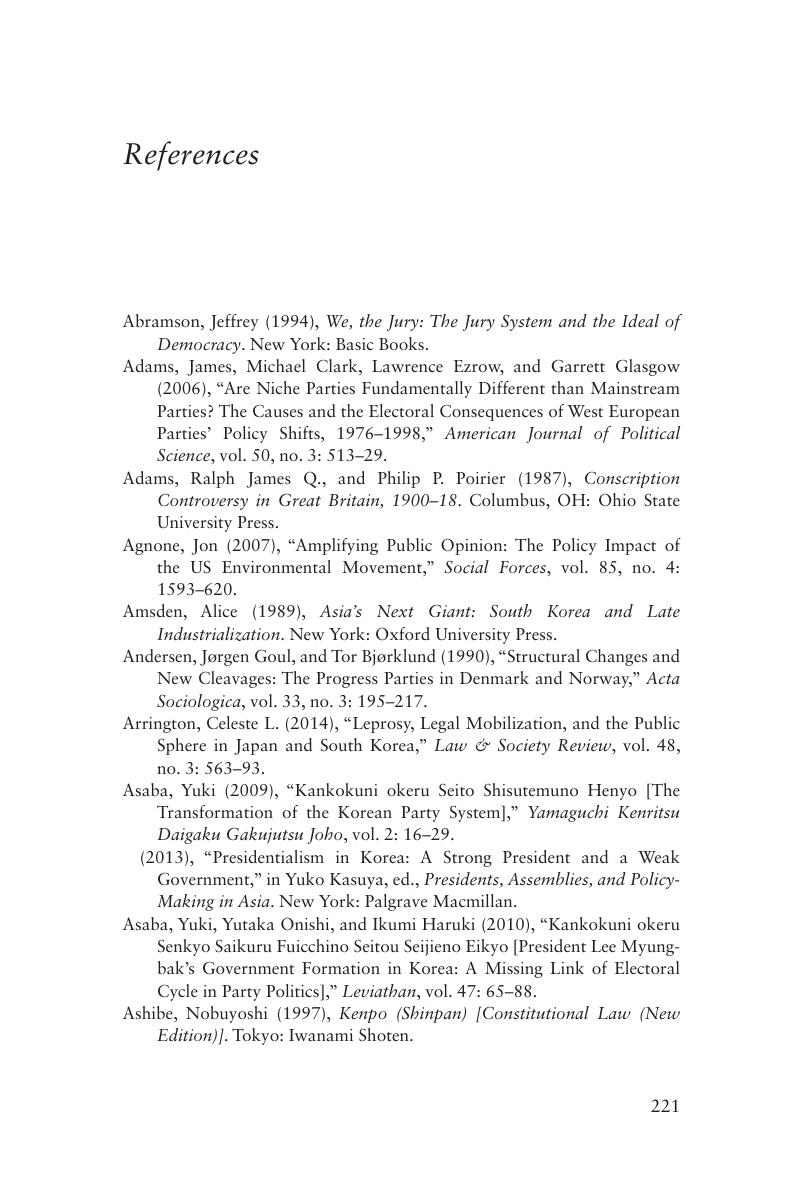Book contents
- Who Judges?
- Who Judges?
- Copyright page
- Contents
- Figures
- Tables
- Acknowledgments
- 1 Introduction
- 2 Theoretical Framework: Participation and Partisan Politics
- 3 The Distribution of Cases
- 4 The History of the Lay Judge System Debate in Japan up to 1996
- 5 Bringing the Lay Judge System Back In, 1997–2004
- 6 Setting the Agenda: New Left-Oriented Parties and Deliberations in the Japanese Parliament
- 7 Proposals for Lay Participation in the Republic of China (Taiwan)
- 8 Introducing Jury Systems in South Korea and Spain
- 9 The Impact of New Lay Judge Systems
- 10 Conclusions
- References
- Index
- References
References
Published online by Cambridge University Press: 06 October 2017
- Who Judges?
- Who Judges?
- Copyright page
- Contents
- Figures
- Tables
- Acknowledgments
- 1 Introduction
- 2 Theoretical Framework: Participation and Partisan Politics
- 3 The Distribution of Cases
- 4 The History of the Lay Judge System Debate in Japan up to 1996
- 5 Bringing the Lay Judge System Back In, 1997–2004
- 6 Setting the Agenda: New Left-Oriented Parties and Deliberations in the Japanese Parliament
- 7 Proposals for Lay Participation in the Republic of China (Taiwan)
- 8 Introducing Jury Systems in South Korea and Spain
- 9 The Impact of New Lay Judge Systems
- 10 Conclusions
- References
- Index
- References
Summary

- Type
- Chapter
- Information
- Who Judges?Designing Jury Systems in Japan, East Asia, and Europe, pp. 221 - 252Publisher: Cambridge University PressPrint publication year: 2017



